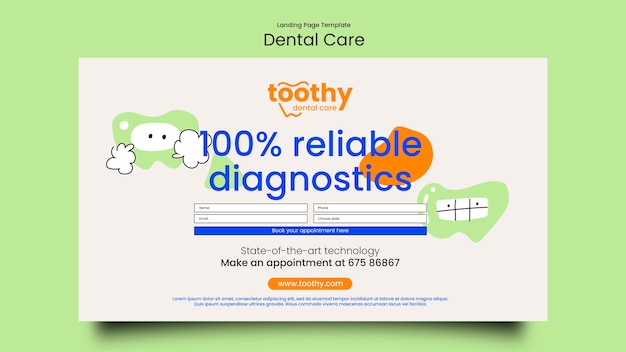
**Understanding Dental Fluorosis in Children and How to Prevent It**
Dental fluorosis is a cosmetic issue that begins during early childhood. Kids under the age of three who consume fluoridated water are at a higher risk of developing this condition. Fortunately, parents can take steps to prevent it and protect their children’s teeth as they grow.
One key factor in the development of fluorosis is the reliance on fluoridated formulas or foods when breastfeeding isn’t an option. When these are consumed, particularly mixed with fluoridated water, it can affect how the enamel forms on permanent teeth. This might lead to discoloration, with teeth appearing extra white, yellowish, or even brown. Severe cases may also result in pits or stains that compromise both the appearance and texture of the outer enamel.
Young children often swallow toothpaste when they are first learning to brush their teeth, usually between ages two and three. Most toothpaste contains fluoride, and swallowing it regularly can contribute to tooth decay or fluorosis, especially affecting their front teeth. Beyond toothpaste, infant formula mixed with tap water containing fluoride is another significant source. Extended use of fluoridated formula can result in severe enamel fluorosis. Additionally, medications like drops, pills, vitamins, and lozenges with fluoride as an active ingredient can also contribute to the problem when directly ingested.
Fluorosis Symptoms:
– Noticeable brown stains or white spots, resembling chalk lines, on front teeth.
– Pitting in extreme cases, making the teeth harder to keep clean.
– A difference in texture and appearance compared to healthy teeth: affected teeth appear rough, while unaffected teeth remain glossy and smooth.
—
**Treatment Options for Dental Fluorosis**
For mild fluorosis, where only back teeth are affected or when discoloration is minor, treatment often isn’t necessary, as the condition may improve over time. However, more severe cases require intervention due to the impact on the appearance of front teeth. Listed below are common treatment methods:
1. **Enamel Microabrasion**
This minimally invasive approach removes thin layers of enamel with an acid-based solution, followed by a treatment with topical fluoride to strengthen and remineralize the teeth. It’s particularly effective for mild fluorosis and helps improve the overall appearance of affected teeth. However, achieving desired results may require several sessions.
2. **Porcelain Laminate Veneers**
For moderate cases, porcelain veneers can be used to cover the discolored teeth. The dentist carefully shaves a small portion of the affected front teeth (about one millimeter) and creates custom veneers in a lab that match the color and shape of neighboring teeth. Once fixed, these veneers not only mask the discoloration but also enhance the tooth’s appearance.
3. **Dental Crowns**
Crowns are a more invasive option, typically reserved for severe cases. The dentist shaves the damaged tooth and places a lab-prepared crown over it, restoring both appearance and function. While effective, this procedure is usually a last resort because the structural health of fluorosis-affected teeth is often still intact, making less invasive treatments a better choice.
4. **Direct Composite Veneers**
Similar to porcelain veneers, this technique involves shaving the affected tooth and applying a composite filling material directly onto it. While it provides immediate aesthetic improvements, the results typically last about a year and may require follow-up care or retreatment.
Out of these options, enamel microabrasion is the least invasive and should be the first line of treatment. Other options, like composite fillings or porcelain veneers, are appropriate for enhancing the appearance of discolored teeth. Crowns, being the most invasive procedure, should be used only when absolutely necessary.
—
**Preventing Dental Fluorosis**
Preventing fluorosis is far better than treating it later. By taking simple yet effective precautions, parents can significantly reduce the risk of their children developing this condition.
1. **Breastfeeding**
Breast milk is not only nutritionally beneficial but also helps shield babies from fluorosis by eliminating the need for fluoride-laden infant formulas. Additionally, it strengthens a child’s immune system, reducing reliance on medications that may contain fluoride.
2. **Mouth Cleaning**
After every feeding, especially when using infant foods or formula, it’s important to wipe the baby’s gums and teeth with a clean, soft cloth or a baby toothbrush. This removes residual particles and reduces fluoride exposure.
3. **Choose Fluoride-Free Options**
Avoid mixing infant formula with fluoridated tap water. Use fluoride-free, distilled, or labeled bottled water instead to eliminate fluoride exposure through feeding. Regular tap water should never be a go-to choice for preparing formula.
4. **Introduce Solid Foods Early**
Around four to six months old, start introducing solid foods (mashed into soft, baby-friendly textures) as a way to minimize reliance on formula. These foods provide necessary nutrients without the risks associated with fluoride.
5. **Regular Pediatric Checkups**
Routine visits to a pediatrician are crucial, even if your baby seems perfectly healthy. A doctor can assess early signs of fluorosis and provide guidance on dental care appropriate for each developmental stage.
6. **Avoid Fluoride Toothpaste for Young Kids**
Use fluoride-free toothpaste unless recommended otherwise by a dentist or doctor. Avoid behaviors like sharing spoons, cleaning pacifiers with your own mouth, or leaving bottles of milk or juice in your child’s crib, as they increase the risk of tooth decay and fluorosis.
—
**The Bottom Line**
Preventing dental fluorosis starts with attention to your baby’s nutrition, hygiene, and oral care practices. Simple measures like exclusive breastfeeding, using fluoride-free water for formula, and early dental hygiene habits can significantly reduce risks. While fluorosis primarily impacts the external appearance of teeth rather than their health, prevention ensures kids grow up with strong, healthy, and beautiful teeth. It’s always easier to prevent the condition from occurring than to treat it later. By adopting these practices early, parents can give their children a happy and confident smile that lasts a lifetime.